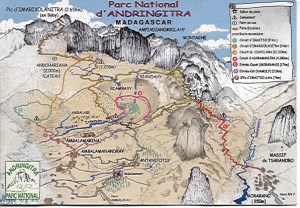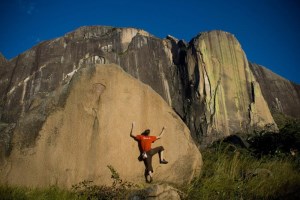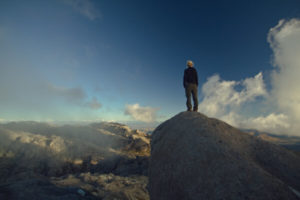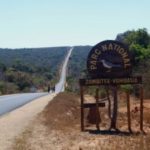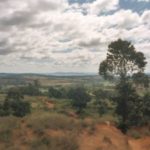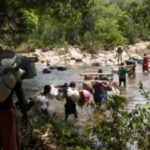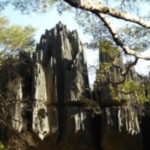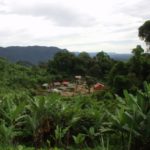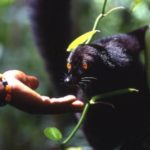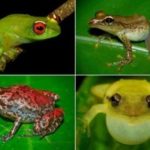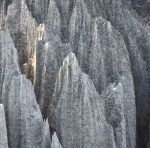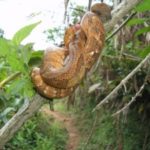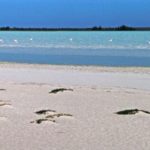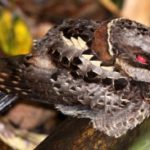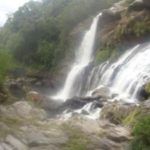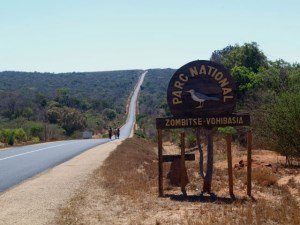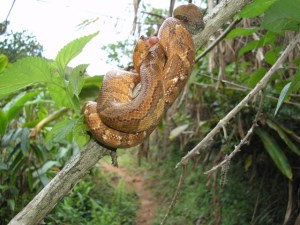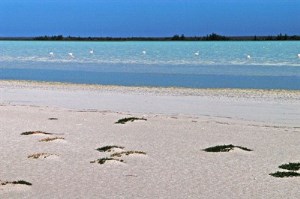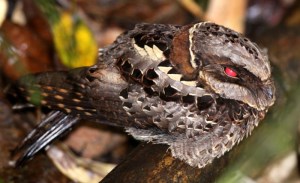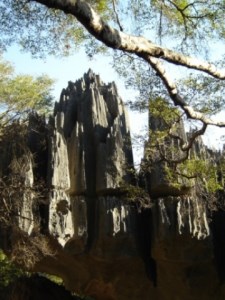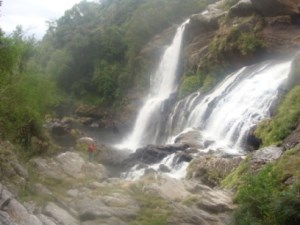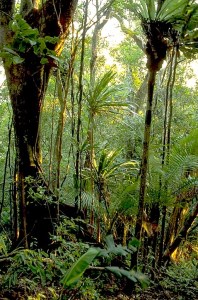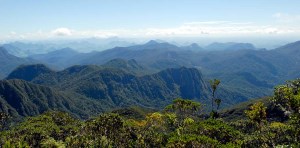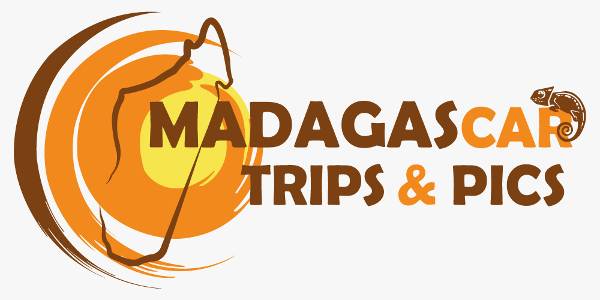Experience Madagascar's mountain worlds:
Trekking & hiking in Andringitra N.P.
Due to its indescribable beauty of the imposing mountain ranges and the spectacular panoramas the Andringitra mountain massif has been protected since 1927. Even then, it was recognized that only a few areas on earth have a similarly high biodiversity: Over 100 different bird species, 13 lemur species and about 40 other mammal species find their home here. Especially the funny looking Kattas populate large parts of the Andringitra National Park. Well over 50 frog species also live in the protected area and around 1000 plant species from Andringitra are known to date. Its highest elevation is Pic Boby. At 2,658 meters, it is the second highest mountain in Madagascar. Although the central highlands of Madagascar were protected early on, the area was visited by few travelers until the 1990s. Only since the area was declared a national park in 1999 as part of Madagascar's Environmental Action Plan has there been a significant influx of visitors. The Andringitra National Park is located in the Fianarantsoa Province, 47 km south of Ambalavao and covers a total of about 31,000 hectares. Climates range from humid, tropical conditions in the eastern lowland rainforests to extremely low temperatures at higher elevations, which can drop to -8 °C.
The different peoples of Andringitra National Park
Three peoples live within the boundaries of the national park. Each has its own identity, follows its own value system and has adapted perfectly to the local living conditions. The Bara Haronga tribe inhabits the east of the Andringitra Mountains and feeds mainly on rice. The Betsileo, who live in the north, are also an agricultural people whose main food is rice. Over the years the Betsileo have developed an elaborate Irrigation system for their rice fields on the mountain flanks developed. The Bara in the west and south, on the other hand, live in the savannah and are a grazing people.
The right tour for everyone - choose the level of difficulty
AsaramanitraA rather short route, which nevertheless offers some highlights on 6km. One of them is the 300m high waterfall in the middle of the deepest rainforest.
DiavolanaThe Diavolana hike takes you along orchid fields to the particularly impressive sacred waterfalls called Riambavy (Queen) and Riandahy (King). They cascade down from 250m high cliffs and create a picturesque picture. When the path gains altitude, dominate craggy granite peaks and the spectacular view of wide valleys. At the highest point of the hike of about 2100m, you will reach a rocky plateau that can serve as a comfortable picnic spot and provides an excellent vantage point to observe the calico lemurs on the opposite rocks. These mountain lemurs have much thicker fur than the species living further down to protect themselves against the cold of this high mountain habitat. The whole tour takes about 10 hours and is strenuous, but certainly one of the most beautiful treks in the area!
Imarivolanitra (Pic Boby)The view from Pic Boby offers an incomparable panorama of the smooth granite blocks and the vast rice fields of the Betsileo. Normally the tour is in 3 - 4 days feasible, but there are countless variants and even day trips from the respective accommodations. The multi-day climb of Pic Boby also includes camping at Andranolava (kitchen, water from the river, toilet, no showers!) or Andriampotsy campsite (with kitchen, water, toilet and showers).
Imaitso: This trail takes you to the beautiful, lush primary forests that make up the eastern part of the park. The route is 14 km long, usually lasts 8 - 9 hours and leads you through wet terrain.
IsahavatoIsahavato is the name of the famous plateau where some rare species of palm trees grow. There you can enjoy an incomparable sunset in the evening with a view of a nearby waterfall. The route is 15 km long and takes about 12 hours in demand. Therefore, one night in the tent is usually planned. We therefore recommend to spend the night at the Iataranomby campsite. The facility is very simple and has a kitchen and a toilet, but no showers and drinking water.
The Andringitra mountain range is undoubtedly one of the most most beautiful landscapes of Madagascar and offers sights that you should not miss. We will gladly inform you about service offers such as the 4 days tour through Andringitra National Park and will work out an individual program with you, which will meet your wishes in the most precise way. Adventurous travelers have the opportunity to explore the unique landscape of the Andringitra N.P for climbing and Paragliding to use. We will gladly inform you about offers.
Your visit to Andringitra National Park
In the direction of Andringitra National Park you drive over the RN 7 from Fianarantosa or Ambalavao. About 37km south of Ambalavao, turn left towards Vohitsaoka. On the way there is a toll of 5,000 Ariary per person. On the last kilometers the road gets much worse. Since there is no possibility to reach Andringitra by public transport, you are dependent on your own reliable off-road vehicle with all-wheel drive instructed. On Madagascar there are of course possibilities to make a Rental car to take advantage of. However, you should already have experience driving off-road. In the park you can stay in one of the rooms of Madagascar National Parcs in Namoly or Morarano accommodate or stay at one of the campsites in the park. The main campsite for the most booked tours (Asaramanitra or Diavalona) is located at Belambo and is equipped with a kitchen, water and toilet. Unfortunately, the popular Camp Catta has had to struggle with financial problems in recent years. Whether it can find its old status under the new owner remains to be seen. However, there are numerous other camps where you can stay overnight. For example the Camp Tsara SOA.
There are two park offices, one in Antanifotsy (Namoly) and another in Morarano (near Camp Catta). Park fees are 10,000 Ariary for one day, 15,000 Ariary for two days, 20,000 Ariary for three days and 25,000 Ariary for four days. The guide tariffs and costs for the porters are calculated according to the chosen tour. The tours are largely on trails in very good condition. In difficult sections of the trails, solutions have been found to make the tour possible for all who do not have physical limitations.

